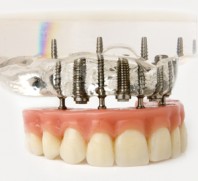- Written by SSI VA
- On Feb 28 2014,
- In Body Contouring Surgery, Plastic Surgery
Breast Augmentation

Women with small or underdeveloped breasts who wish to enhance their appearance may choose to have a procedure called breast augmentation or mammoplasty. Breast augmentation costs vary greatly from surgeon to surgeon.
Understanding the different techniques involved will help you bugdet for breast augmentation surgery better.
A fuller body contour can be safely achieved through the placement of implants directly under the breast tissue or beneath the chest wall muscle. Implants that are filled with saline or salt-water, silicone or gel can be used for breast augmentation procedures.
Small incisions are made so that the implant can be inserted. These small incisions may be made in the crease under the breast or under the nipple. The implant is then filled to achieve the desired size and shape of the breast. The surgery can be performed as an outpatient under general anesthesia or ambulatory (local anesthesia) and takes approximately 2-3 hours to complete.
Most patients can resume to normal activities within 5-6 days following surgery. Sutures are removed in 7 to ten days and your surgeon may recommend a surgical support bra. Exercise and other strenuous activities may be resumed in about one month.
Anesthesia: General or local with Sedation
Location: Hospital
Minimum Stay: 10 days
At the initial visit, your doctor will likely ask you to describe in detail what you would like improved. Be specific about what you would like done. If your surgeon fully understands your expectations, he’ll be able to determine whether your goals are realistic. Your surgeon will examine your breasts. He will talk to you about the size you want your breasts to be and other considerations involved with breast augmentation.
Discuss with your surgeon:
- Breast Implant shape: round or teardrop
- Breast Implant surface: smooth or textured
- Breast Implant size and volume: cup size/210 ml-500 ml
- Breast Implant placement: above or below the muscle
- Breast Implant Incision site: armpit, areola, breast or belly button
See Breast Augmentation Procedures/Techniques for detailed comparisons of these options.
You are at increased risk for complications if you have diabetes, poor circulation, heart, lung or liver disease, smoke, have a family history of blood clots, take certain medications, etc. You’ll want to discuss your medical history thoroughly with your physician.
Breast Surgery Pre-op Preparation
- If you smoke, quit smoking for at least 2 weeks pre-op (and anticipate no smoking for the recovery, smoking greatly increases your risk of complications)
- Do not take aspirin or anti-inflammatory medications for two weeks
- Your SSI personal assistant will help you fill prescriptions (especially pain medications and antibiotics) before surgery
- Set up recovery area: lots of pillows, books, magazines, journal, stationery, T.V., remote control, videos, favorite CDs
- Black out windows so you can rest during the day
- Dietary Needs:Consider quick snacks: Protein shakes, soup, applesauce, jell-O, frozen dinners, yogurt, oatmeal, cottage cheese, juice (purchase flexible straws for easier drinking)
- Be sure to have adequate protein – the body needs it for proper healing
- Talk to your doctor about low-sodium foods to reduce swelling
- Prepare Icepacks (can also use packs of frozen veggies or fruit, gel packs, etc/) to reduce post-op swelling
- Moisturizers, scar reducing creams and petroleum jelly for incisions
- Laxatives (pain medications are often binding)
- Eye Drops (after any surgery, eyes can be dry)
- Consider hand-held shower head and bathroom chair
- On the day of surgery, wear loose clothing which will be easy to get off and on after operation (a shirt that buttons in front)
- Follow your physician’s directions carefully regarding medications, eating & drinking.
by SSI VA
Categories
Recent Posts
-

Dental Implants
Dec, 30, 2015
-
General Dental Crowns
Dec, 30, 2015
-
Terms & Conditions
May, 26, 2015
-
Payment & Privacy Terms
May, 26, 2015
-
Dental Surgery
May, 26, 2015
-
Orthopedic & General Surgery:
May, 26, 2015
-
Eye Surgery
May, 26, 2015
-
Plastic Surgery:
May, 26, 2015
-
Site Map
May, 26, 2015
-
Links
May, 26, 2015













Leave a Comment